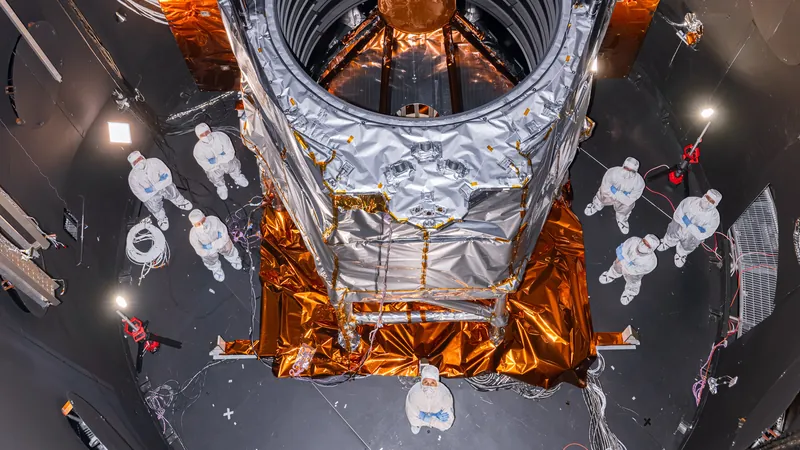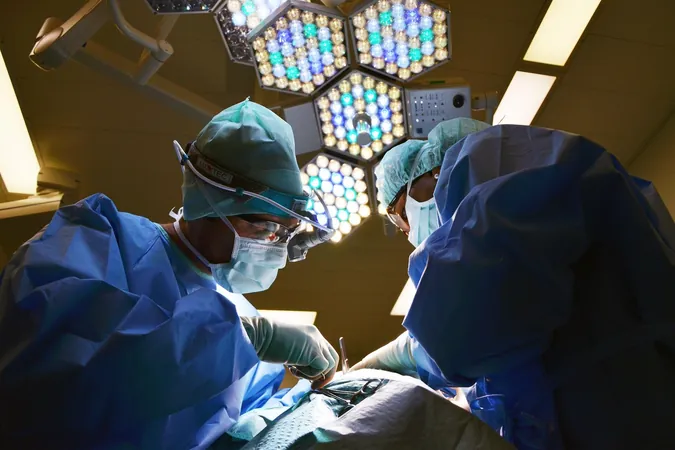
NASA Pushes Forward with the Groundbreaking Roman Space Telescope Amid Budget Concerns
2025-05-16
Author: Siti
NASA engineers have made significant strides toward the launch of the highly anticipated Nancy Grace Roman Space Telescope. Recent tests on one half of this state-of-the-art observatory mark a pivotal milestone in ensuring its performance once deployed in the depths of space.
Jack Marshall, leading the integration and testing efforts at NASA's Goddard Space Flight Center, expressed enthusiasm: "This milestone positions us to attach critical components like the flight solar array sun shield and deployable aperture cover, which we plan to begin this month." He added that once these assemblies are connected, the team will conduct comprehensive tests before the telescope's launch.
Scheduled for liftoff in early 2027, concerns loom over NASA's budget for 2026, with rumors of a staggering 24% cut — the largest in the agency's history. This reduction threatens major initiatives, including the Gateway moon-orbiting project and Mars sample return missions. Although key projects like the Hubble and James Webb Space Telescopes are expected to receive funding, the fate of the Roman Space Telescope remains uncertain.
Despite these financial anxieties, engineers are progressing with the Roman project. Earlier this year, they successfully installed a sunshade, known as the "deployable aperture cover," onto the telescope's outer barrel. By March, solar panels were added, enhancing the observatory's readiness for the upcoming thermal tests.
In April, the Roman setup was transferred to NASA's Space Environment Simulator, a massive chamber designed to replicate the extreme temperature fluctuations the telescope will encounter in space. Astrophysicist Jeremy Perkins emphasized, "These tests ensure that the instruments can maintain stable operating temperatures, even in harsh conditions and a vacuum."
With Roman situated nearly a million miles from Earth post-launch, repair missions will be impossible, underscoring the critical need for flawless deployment and operation. Technicians are preparing to connect the telescope's two main sections this November, with full assembly expected by year's end.
Once final testing is wrapped up, Roman will be shipped to NASA's Kennedy Space Center in Florida, gearing up for a summer 2026 launch. While NASA scientists maintain that the timeline is on track, they are diligently exploring the possibility of an earlier launch as soon as fall 2026.



 Brasil (PT)
Brasil (PT)
 Canada (EN)
Canada (EN)
 Chile (ES)
Chile (ES)
 Česko (CS)
Česko (CS)
 대한민국 (KO)
대한민국 (KO)
 España (ES)
España (ES)
 France (FR)
France (FR)
 Hong Kong (EN)
Hong Kong (EN)
 Italia (IT)
Italia (IT)
 日本 (JA)
日本 (JA)
 Magyarország (HU)
Magyarország (HU)
 Norge (NO)
Norge (NO)
 Polska (PL)
Polska (PL)
 Schweiz (DE)
Schweiz (DE)
 Singapore (EN)
Singapore (EN)
 Sverige (SV)
Sverige (SV)
 Suomi (FI)
Suomi (FI)
 Türkiye (TR)
Türkiye (TR)
 الإمارات العربية المتحدة (AR)
الإمارات العربية المتحدة (AR)